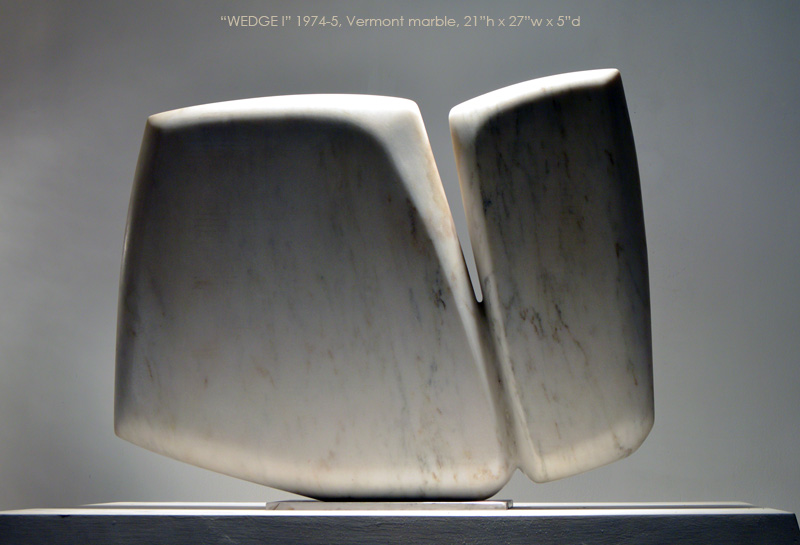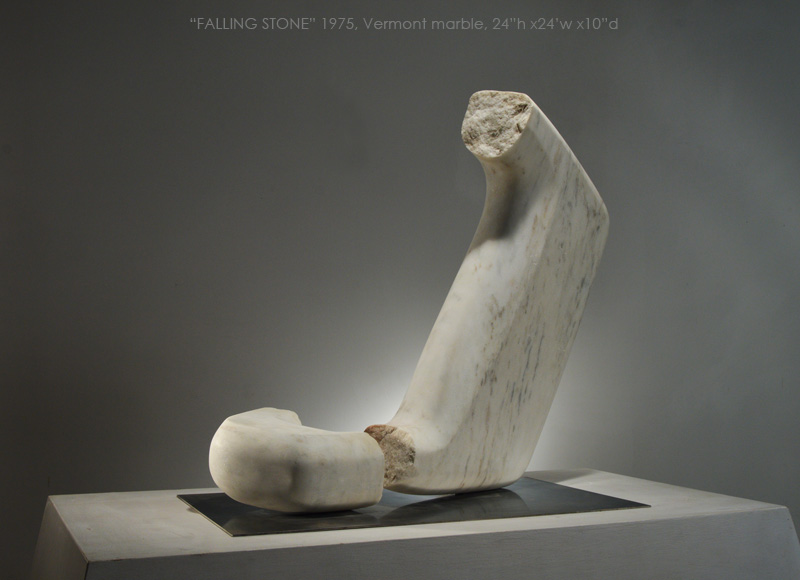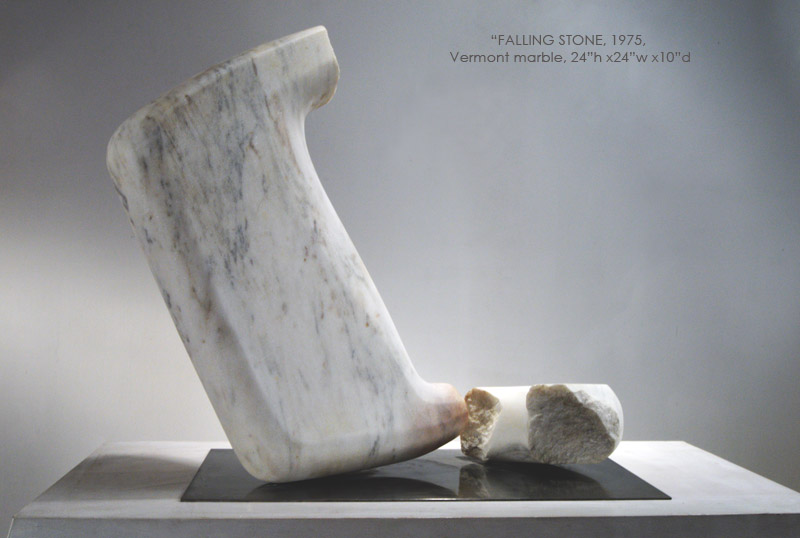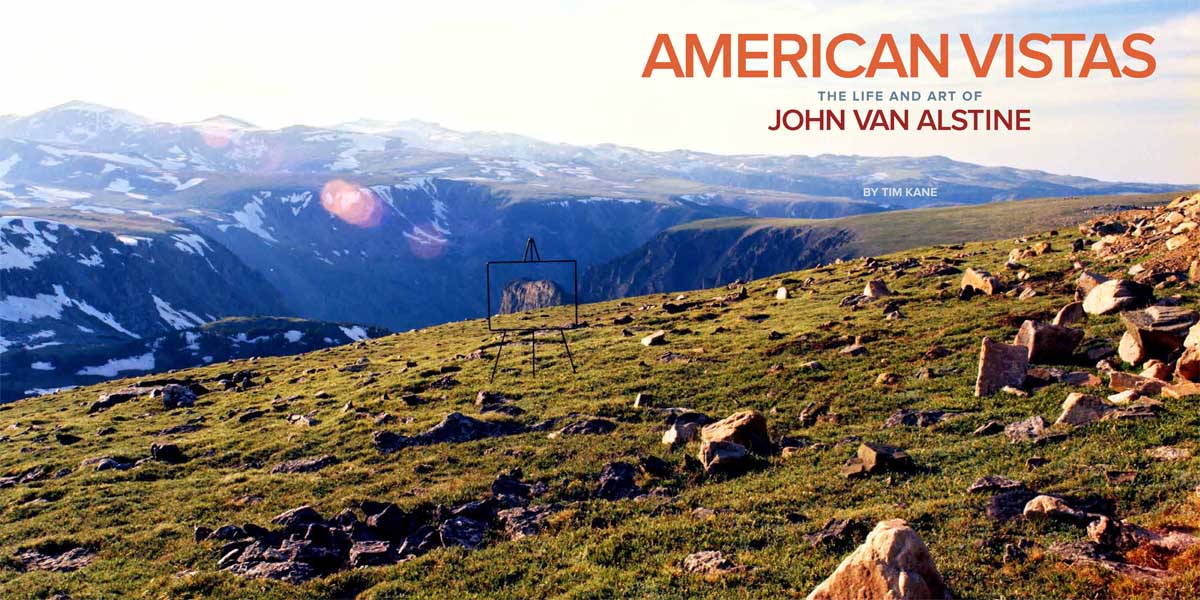
SHORT HIGH LIGHTS by Tim Kane
from the
recently
released 256p. hardover edition
| AMERICAN
VISTAS: Life and Art of John Van Alstine" by Tim Kane
Drop # 6:
From:
AMERICAN VISTAS: The Life and Art of John Van Alstine" by Tim Kane
https://johnvanalstine.com//Amer_Vistas_infopage_11-2022.htm
(**warning - political option forth-coming, if you are a Trump Cult
worshiper/groupie - skip this one)
Drop #6: "SISYPHUS and COVID New Realities – tough Path Upward"
During the Covid lockdown John Van Alstine revisits the Sisyphean myth
that he has turned to frequently to comment on the creative process.
He created 14 new works in the series that are particularly germane
in a different way specific to the Covid period.
He states in 2020 "As the world struggles with the Covid pandemic
and political regimes which deny science, we are all confronted with
the symbolic task of pushing our stone upward, a seemingly unending
task as we deal with the new realities that have been thrown in our
path."
"These new 2020 Sisyphean works employ a similar formal vocabulary
as in previous periods – circles, stones, arcs, incline planes - but
the focus is shifted to confront and give an artist's voice to the Covid
period. In several of these works poignant titles and text, stamped
directly into the bronze, add new expressive elements that forcefully
hammer home his point."
Van Alstine goes on to say, "Confront. Yes, it's a strong word
and not typical of my work or usual intent. But this period was different.
Not only were we all faced with the spread of a virus the likes not
seen in a century, but with the inept, downright selfish, self-promoting
response of “I alone can fix it” mentality of our political powers –
basically one big asshole - that purposefully spread propaganda, worked
against and demeaned “experts”, all to gain more personal political
power. The inclusion of the embedded/stamped text on the bronze is new
for me, prompted by outrage, and the need to better communicate, “speak
up” in the only way I knew how, through my sculpture."
For
more info: |
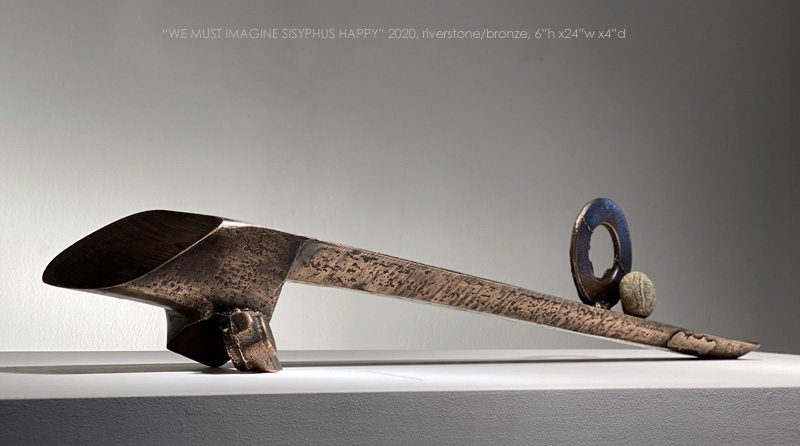
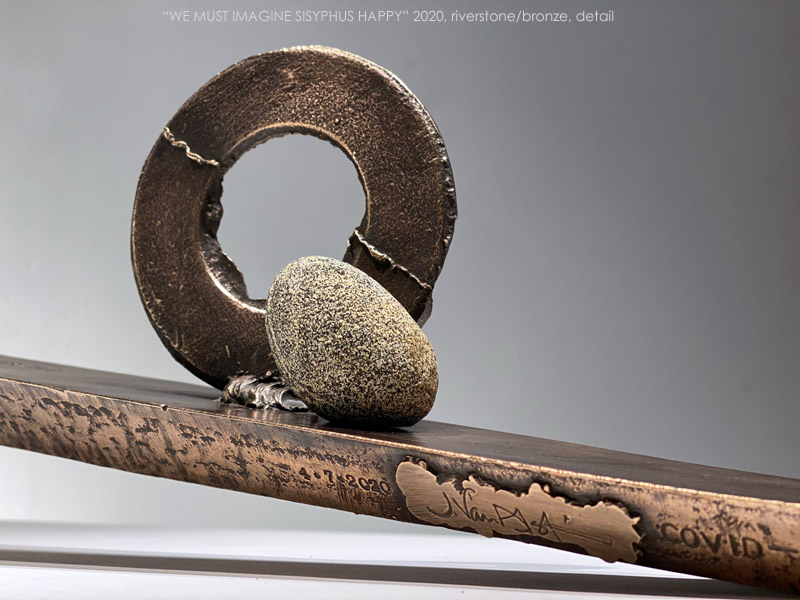
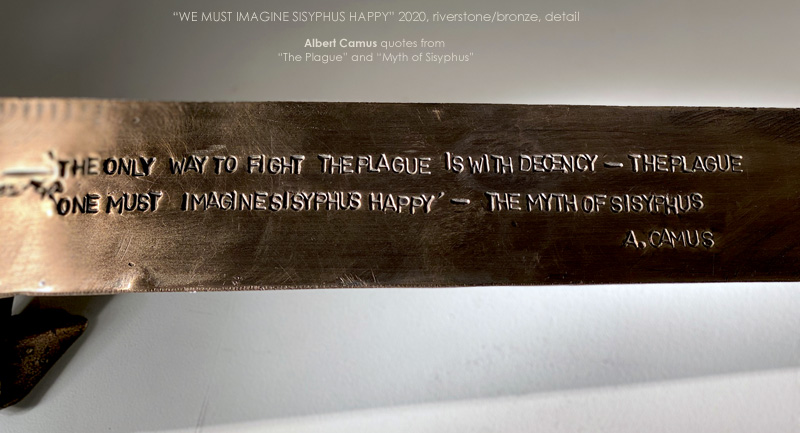
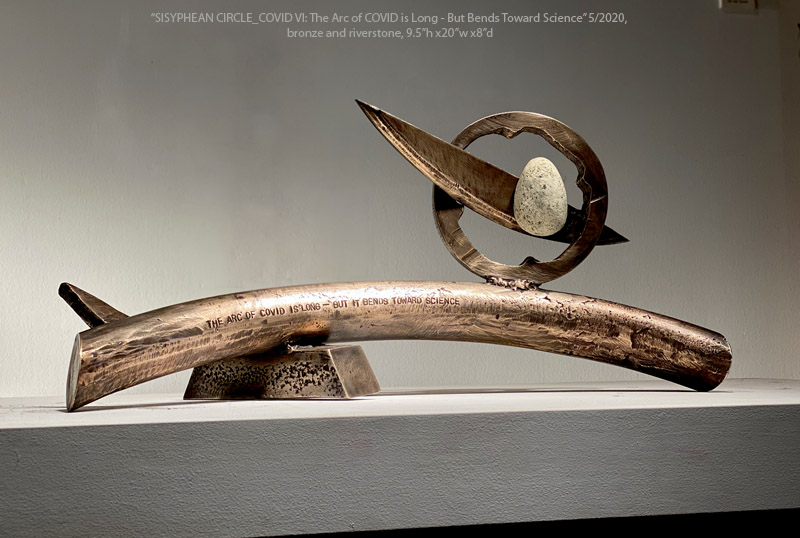
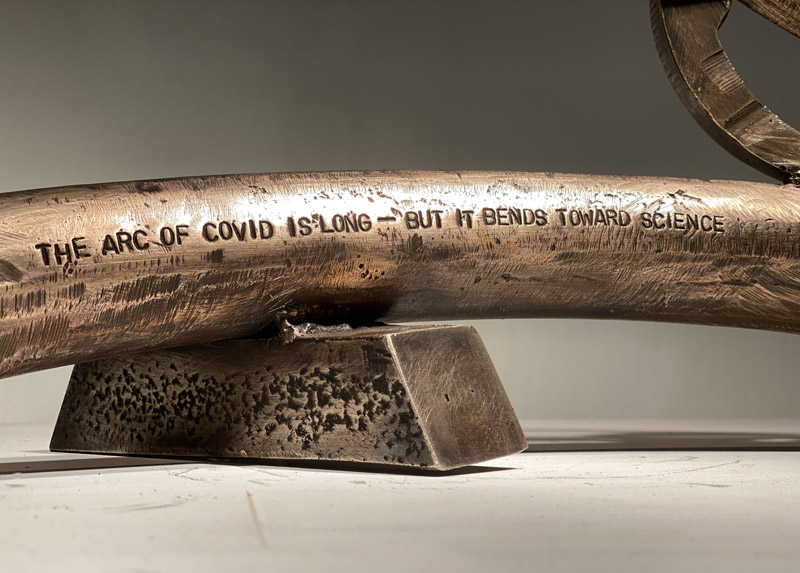
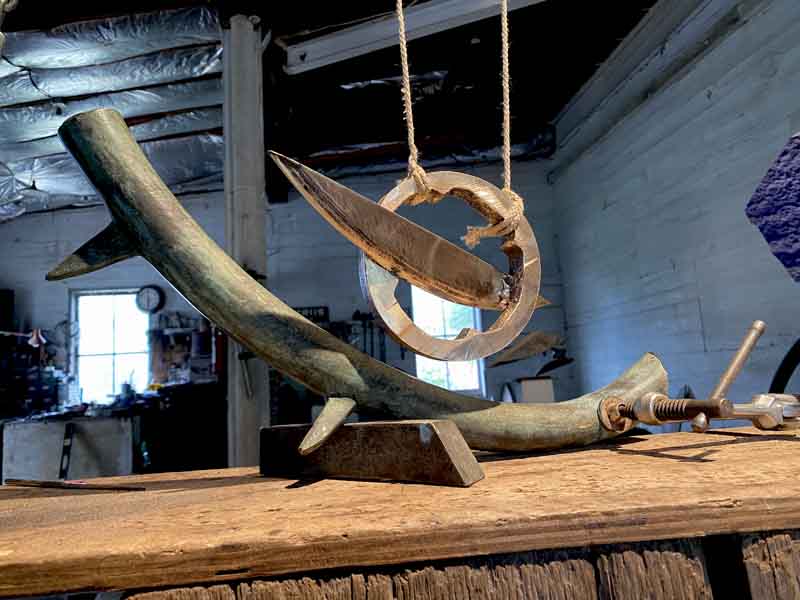
Initial
working arrangement of Sisyphean Circle-Covid VI: The Arc Of Covid
Is Long - But It Bends Toward Science, May 2020.
|
AMERICAN
VISTAS: Life and Art of John Van Alstine" by Tim Kane
Drop # 5:
A COMMUTE THROUGH
INDUSTRIAL REMNANTS
During the early 1980’s Van Aline moved from DC to Jersey City,
NY on the west bank of the Hudson River just across from lower Manhattan.
He kept his teaching job at the University of Maryland, and made the
4 hour commute through the heart of industrial northeast from Jersey
City to teach at College Park weekly. This interaction with what he
calls industrial architecture added more fuel to his increasingly large
sculptures, with more free flowing with arches, beams and riveted towers,
combined with stone, often twisting and looking like concrete, while
steel holds them together as it juts outward, sometimes like limbs of
Leviathans.
Van Alstine describes
how his process merged with steel and its larger meanings.
"Because I use found objects, I respond to the environment that
I’m in. In the early 80’s I was driving through some of
the most industrialized parts of the country, Kearney NJ, Newark, Philadelphia,
Wilmington, Baltimore…weekly. My studio was near the waterfront
of Jersey City directly across from the World Trade Center towers. I
was continually searching out physical material for my sculpture. The
marine and industrial setting on the west bank of the Hudson was amazing;
huge riveted-beam draw bridges, the Pulaski Skyway".
"The deserted industrial warehouses, abandoned ship piers were
all around. It was visually gritty, sweaty, blue collar, it was pervasive;
it entangled you, immersing and penetrating into your senses.”
It is no surprise that all of this began to seep into his work. “I
would visit scrap yards, boat yards and select steel remnants much like
I did with stone quarries. I was looking for a narrative, a prose about
metal fabrication, industrialization and urban life. These discarded
elements were left for the taking, orphaned excesses from the great
production of 20th century industry."
There were many work created at this time including, Drastic Measures,
Rockslide I and II, Rounder I and II, Los Arcos, and more.
#johnvanalstine #johnvanalstinecarolineramersdorfersculpture #americanvistas
#TimKane #stoneandsteelsculpture #JerseyCity #basculebridge #polaskiskyway
#adirondackartist
For
more info:
|
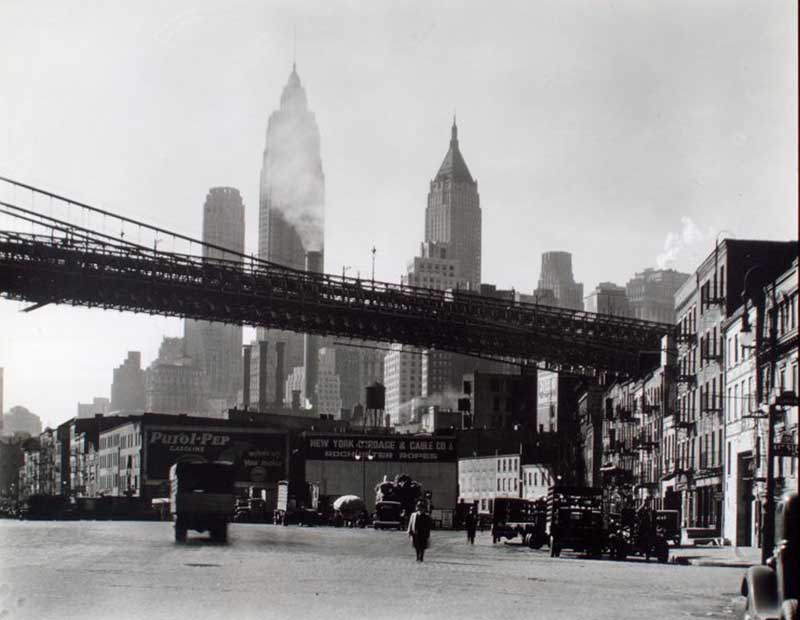
Berenice
Abbott, Waterfront South Street, NYC, 1935,
WPA photo.
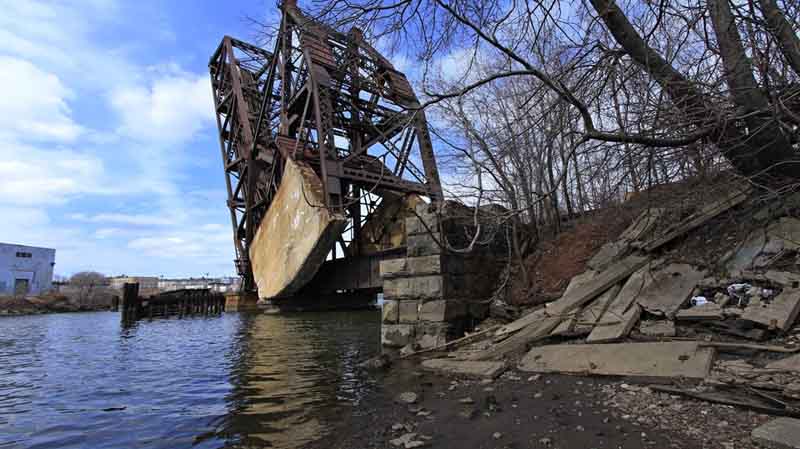
Annie
Bridge, a bascule bridge with concrete
counterweight near Newark,

Drastic
Measures (l.) and
(S-84-09) Rockslide I, (r.) both
1984,
granite
and steel, exhibition Diane Brown Gallery, NYC, 1984. Private collections
.

Rockslide
II, 1984, granite
and steel, 102 x 48 x 36 in. (259 x 122 x 91 cm). Collection: Dayton Art Institute,
Dayton, OH.
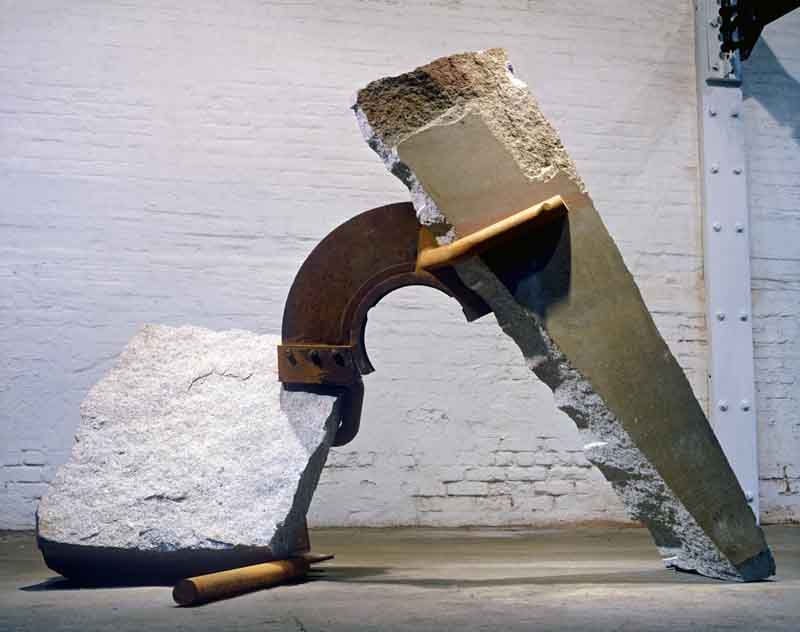
Rounder
I , 1984, granite
and steel, 78 x 90 x 42 in. (198 x 229 x 107 cm). Private collection.
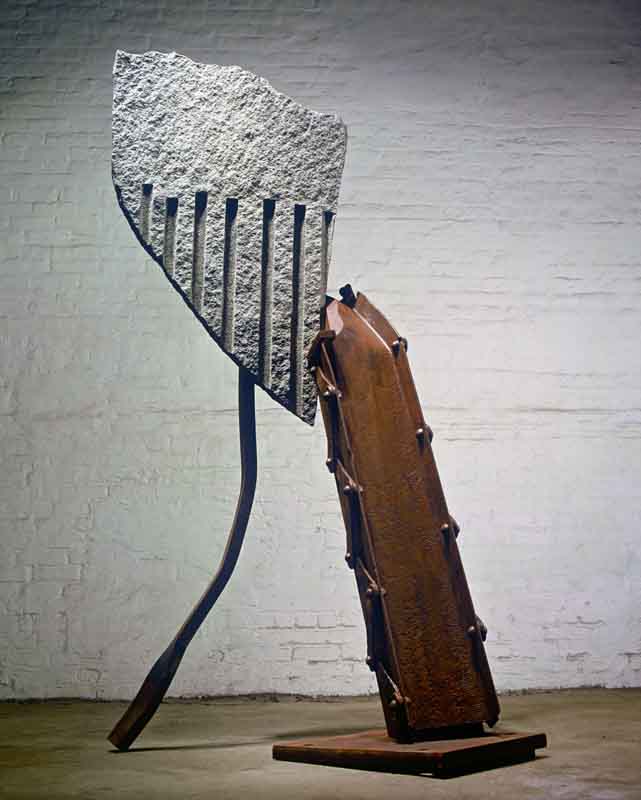
Gimp
,
1985, granite and steel, 78 x 55 x 48 in. (198 x 140 x 122 cm).
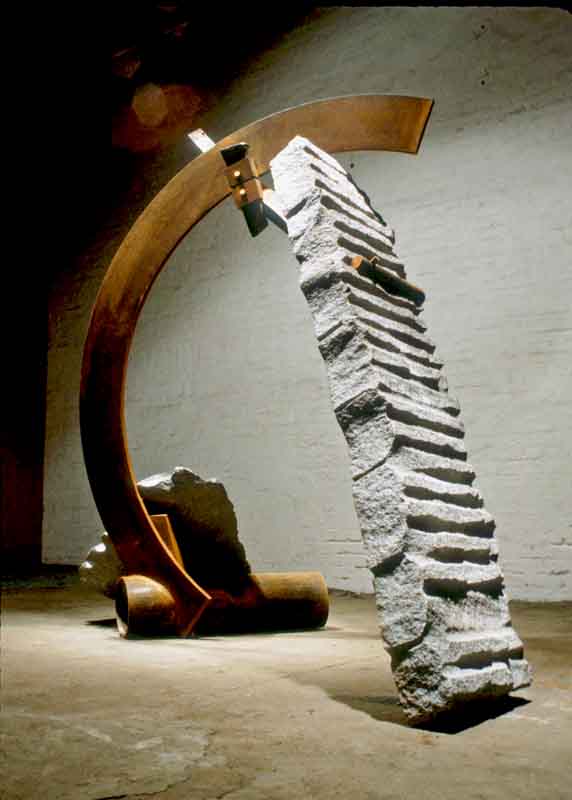
Rounder
II, 1985, granite
and steel, 72 x 96 x 48 in. (183 x 244 x 122 cm). Collection: Newark Museum,
Newark, NJ.
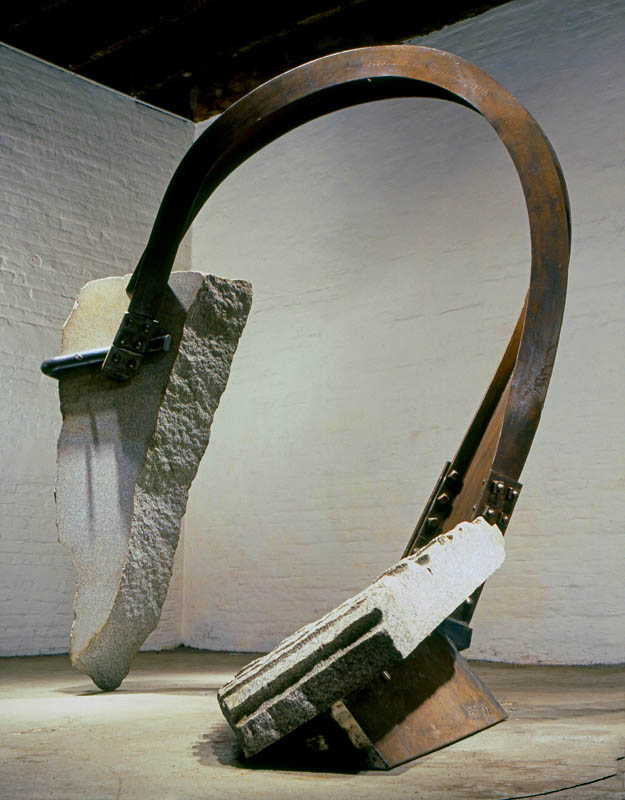
Los
Arcos, 1985, granite
and steel, 96 x 144 x 72 in. (244 x 366 x 183 cm). Private collection.
| DROP
#4 AMERICAN VISTAS: Life and Art of John Van Alstine" by Tim Kane
Toiling
along with Sisyphus: A Journey Unfolds, Part 1
To
truly understand John Van Alstine's sculpture, you have to delve into
his relationship with mythology.
During
the past 40 years, he has turned to mythology and related stories frequently.
So much so it's the single most important reoccurring theme in his work.
To
say he's an artist who primarily draws upon the classics is inaccurate.
He dives into myriad themes yet works that engage with ancient storytelling
out number other motifs in his collection.
This
repeated pattern often falls upon the shoulders of Sisyphus. Condemned
to a life of fruitlessly pushing a heavy rock up a hill only to do it
all over again is ripe with metaphors for a sculptor. Van Alstine presents
us with a new twist on the old narrative with a series of about 200
Sisyphean sculptures since the first “Sisyphean Circle”
in 2005.
While
20th century artists have primarily focused on the Sisyphean story as
about torment and captivity, Van Alstine sees it in more uplifting terms.
He turns to existentialist Albert Camus' essay The Myth of Sisyphus,
which suggests the struggle, or journey is the most meaningful thing,
not the result, and adhering to process is more important than the object
itself.
For
more info: |
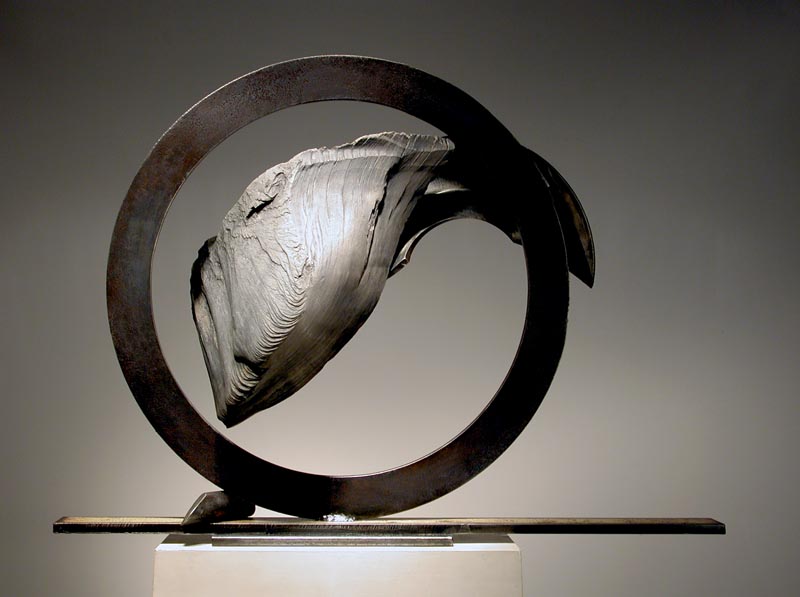
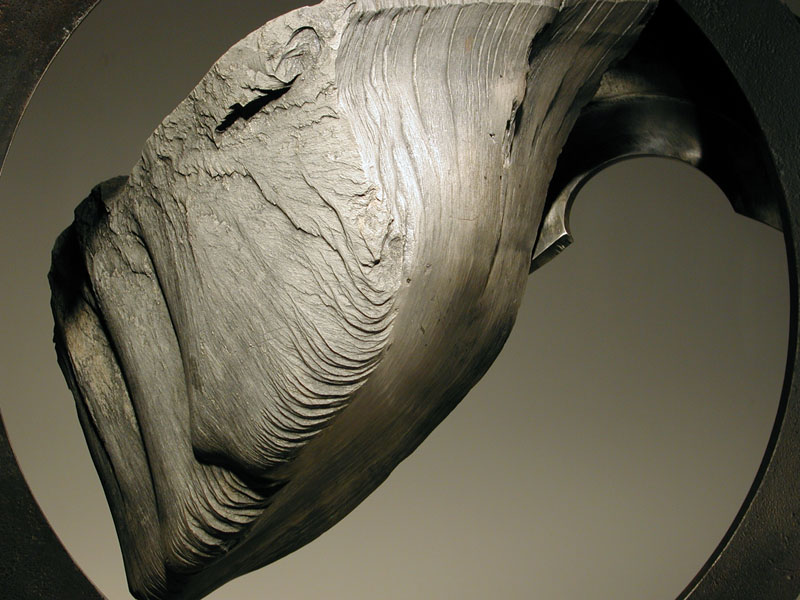
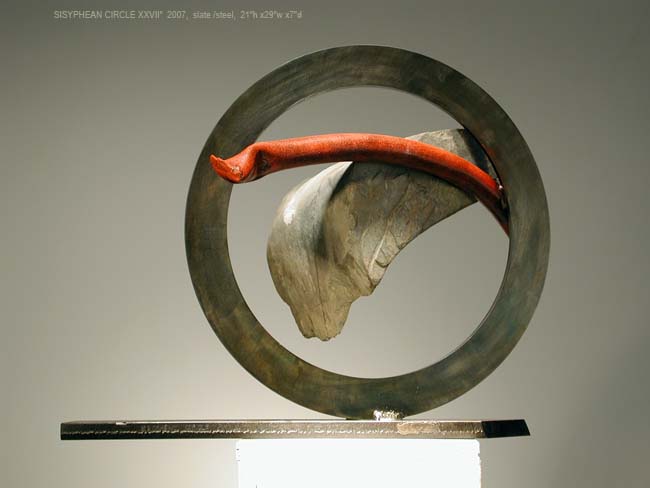
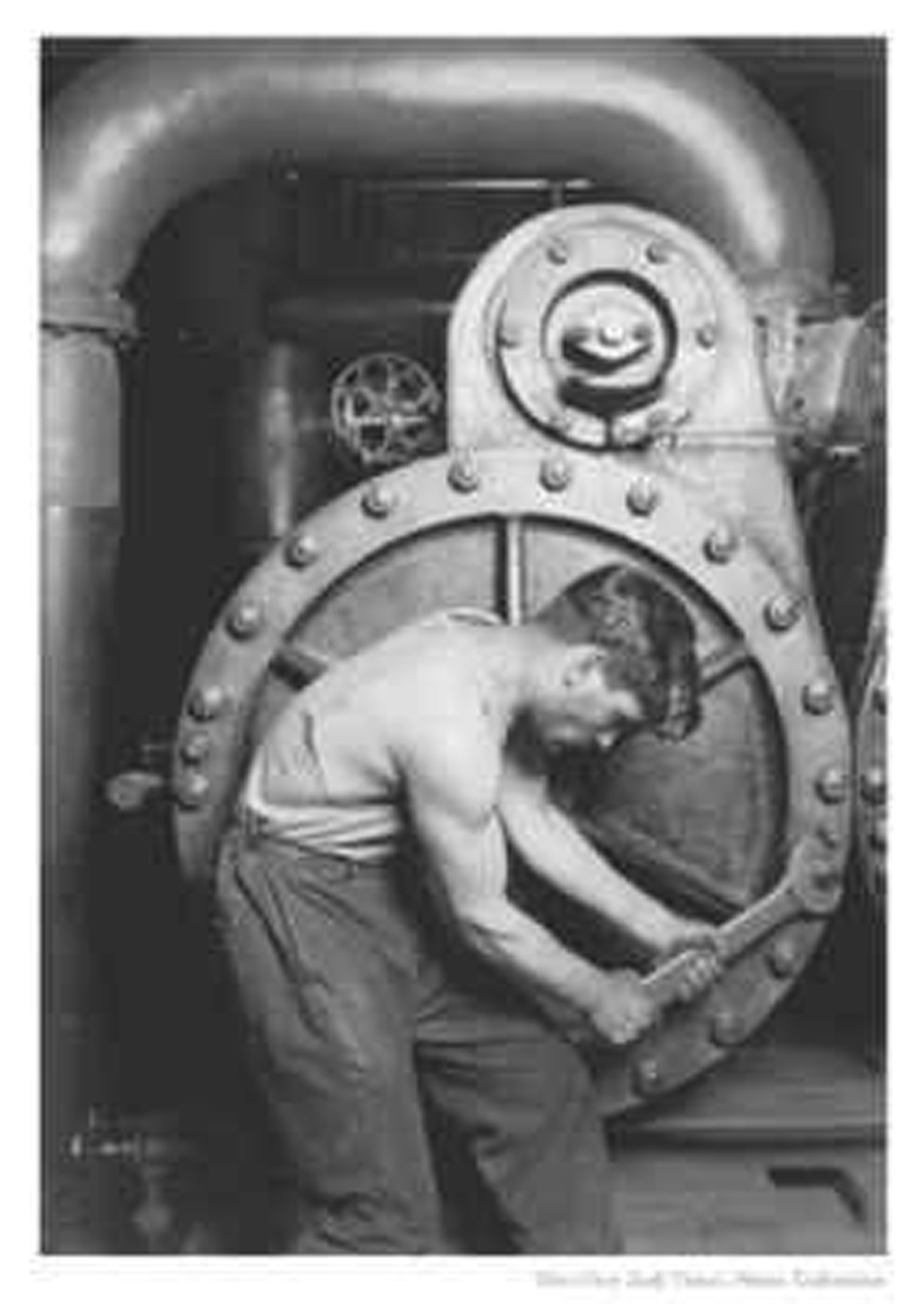
| DROP
#3 AMERICAN VISTAS: Life and Art of John Van Alstine" by Tim Kane
"Hirshhorn Museum and 'Brute Sculpture'"
JOHN VAN ALSTINE’s sculpture is discovered by the Smithsonian’s
Hirshhorn Museum in Washington, D.C., a major turning point.
In 1979, curator
Howard Fox includes Van Alstine’s work in the “Brute Sculpture”
section of the important Directions/79 survey exhibition that pinpointed
key trends during a very tumultuous period in American sculpture.
By placing his work on the national stage for the first time, the exhibit
was one of the major highlights of Van Alstine’s early career
representing the culmination of the process to incorporate a realistic
representation of natural forces in three-dimensional designs.
During the four
years since Cornell, Van Alstine found a vocabulary expressing the potential
energy of sculptural materials, often precariously balanced with the
sense of drama and danger, moving from the realm of static form to actual
in kinetic movement.
In 1980, the
Hirshhorn Museum acquires “Nature of Stone I”, 1976, for
its permanent collection. In 1981, it acquired “4th Beast of Daniel”
along with several drawings.
For
more info: |
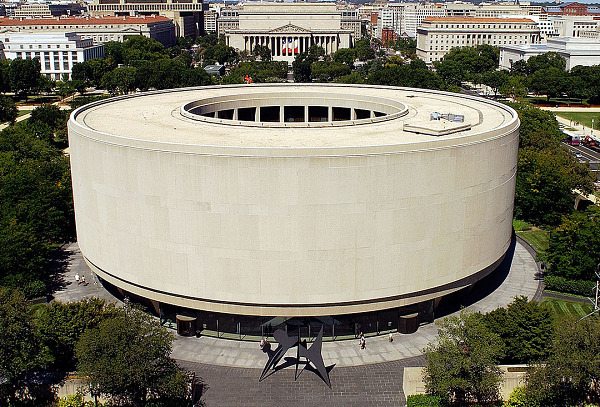
Hirshhorn Museum, Washington, DC

“Nature of Stone I”,
1976
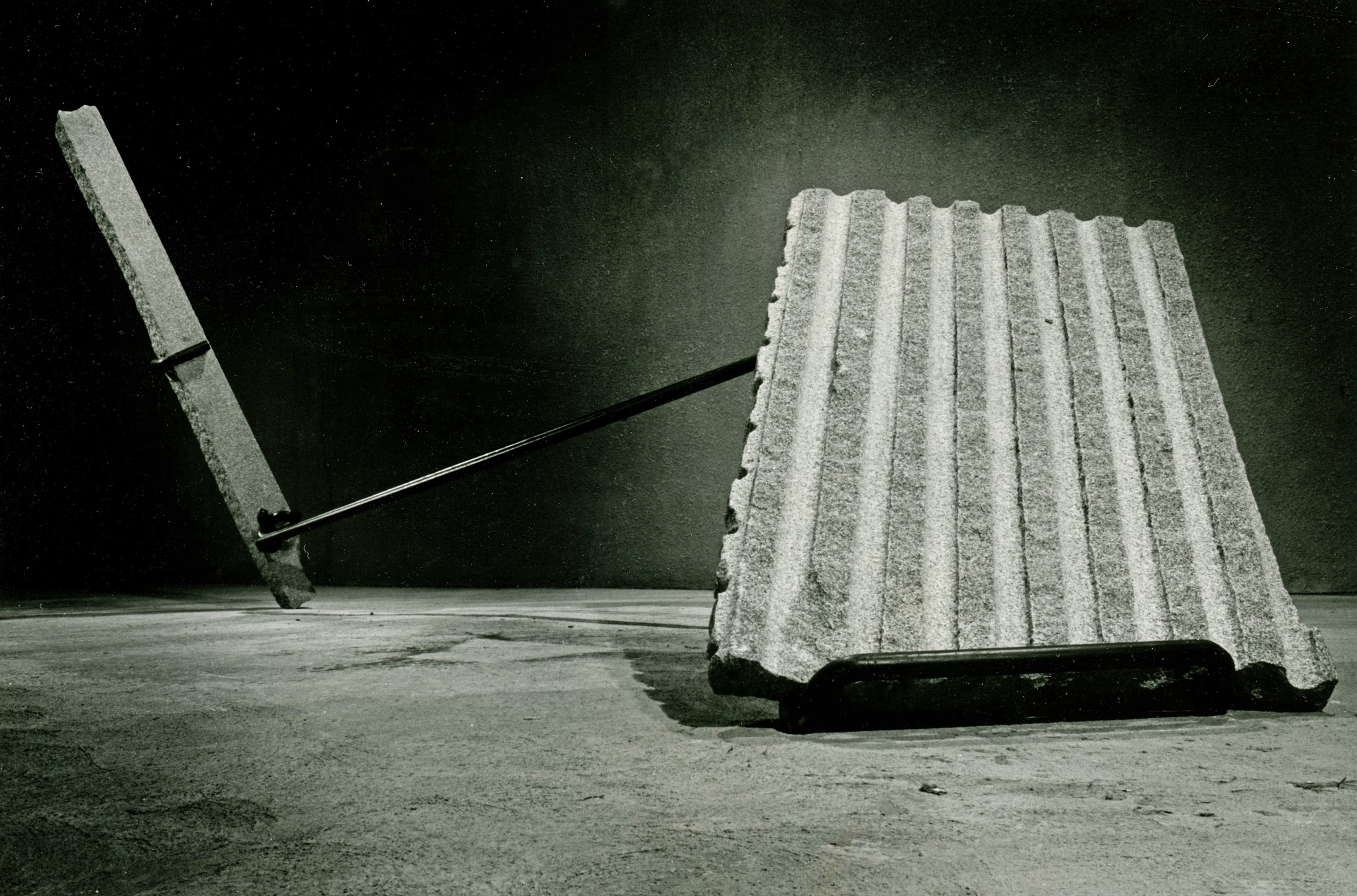
"Torque #1, 1977
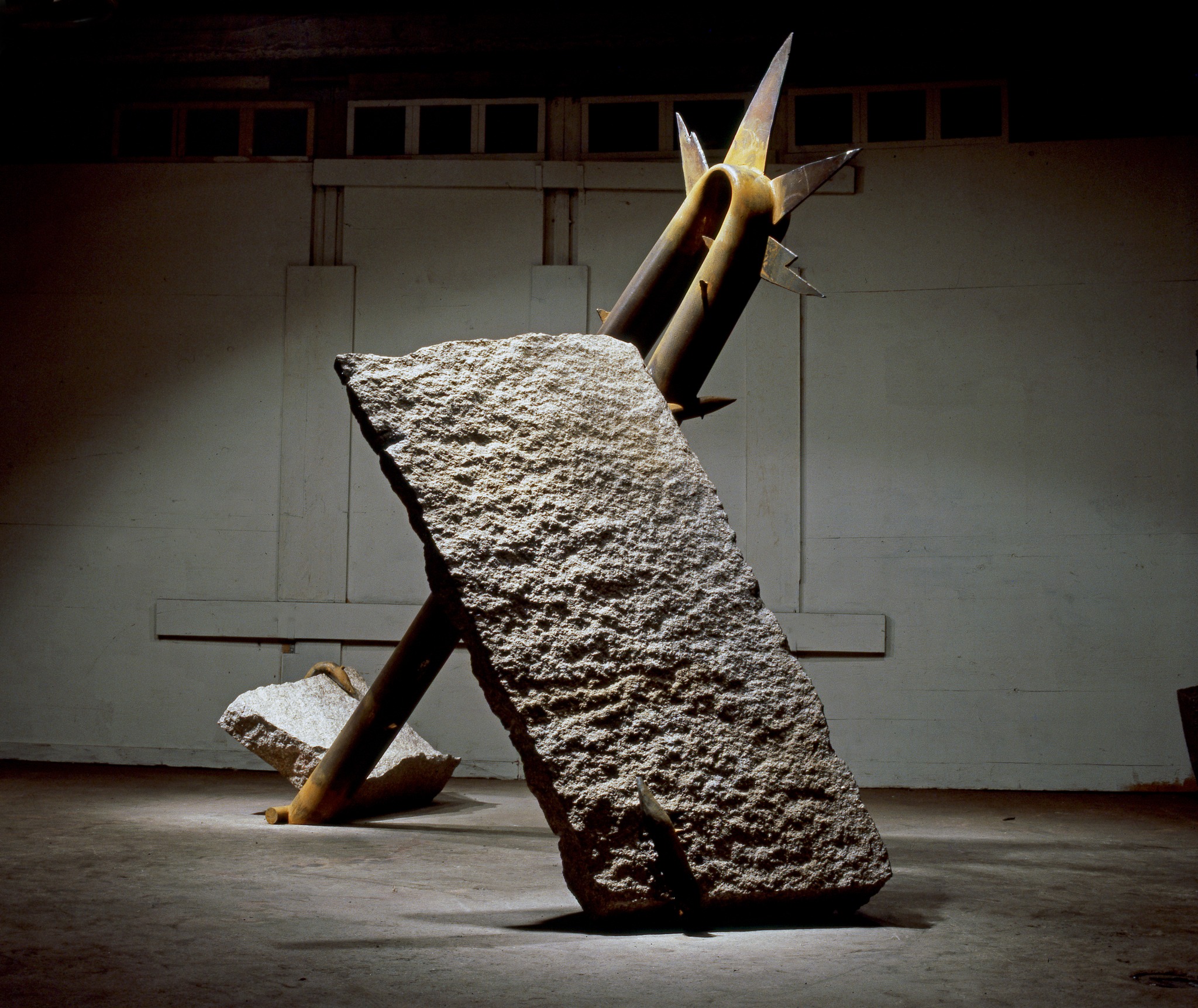
“4th Beast of Daniel”,
1981
| DROP
#2 AMERICAN VISTAS: Life and Art of John Van Alstine" by Tim Kane
EARLY INFLUCENCES AND ENCOURAGEMENTS - MAINE COST and PRODUCTION POTERY
Maine is known for its shorelines with massive rocks jutting out as
waves, often churned up by storms, making for dramatic scenery. It also
was a major influence on the young artist John Van Alstine.
In 1973, the summer before graduating Kent State with a BFA, Van Alstine
traveled to Kennebunkport, ME assisting fellow students David and Diane
Jenkins in opening their pottery shop "The Good Earth". They
went to Maine largely on a whim, David recalls. “We were like…
hey, ‘let’s make some pots and why not in Kennebunkport…it
was in the spirit of those days.”
After setting up shop, they learned about the market, Jenkins said,
finding out what sold and what didn’t. "Working artistically
with his hands and earning an income provided a sense of value for John
Van Alstine. He was pretty quick to adapt to what sold and matched market
demand, but also would commit time toward more sculptural, non-functional
pieces".
Seven summers in Maine (1970-76) were hugely influential, both aesthetically
and practicality. Van Alstine stated, "Being somewhat commercially
successful selling pots, gave me the confidence that ... maybe I could
actually make a living by creating" ... the rest is history.
For
more info:
|

Goat Island near Kennebunkport
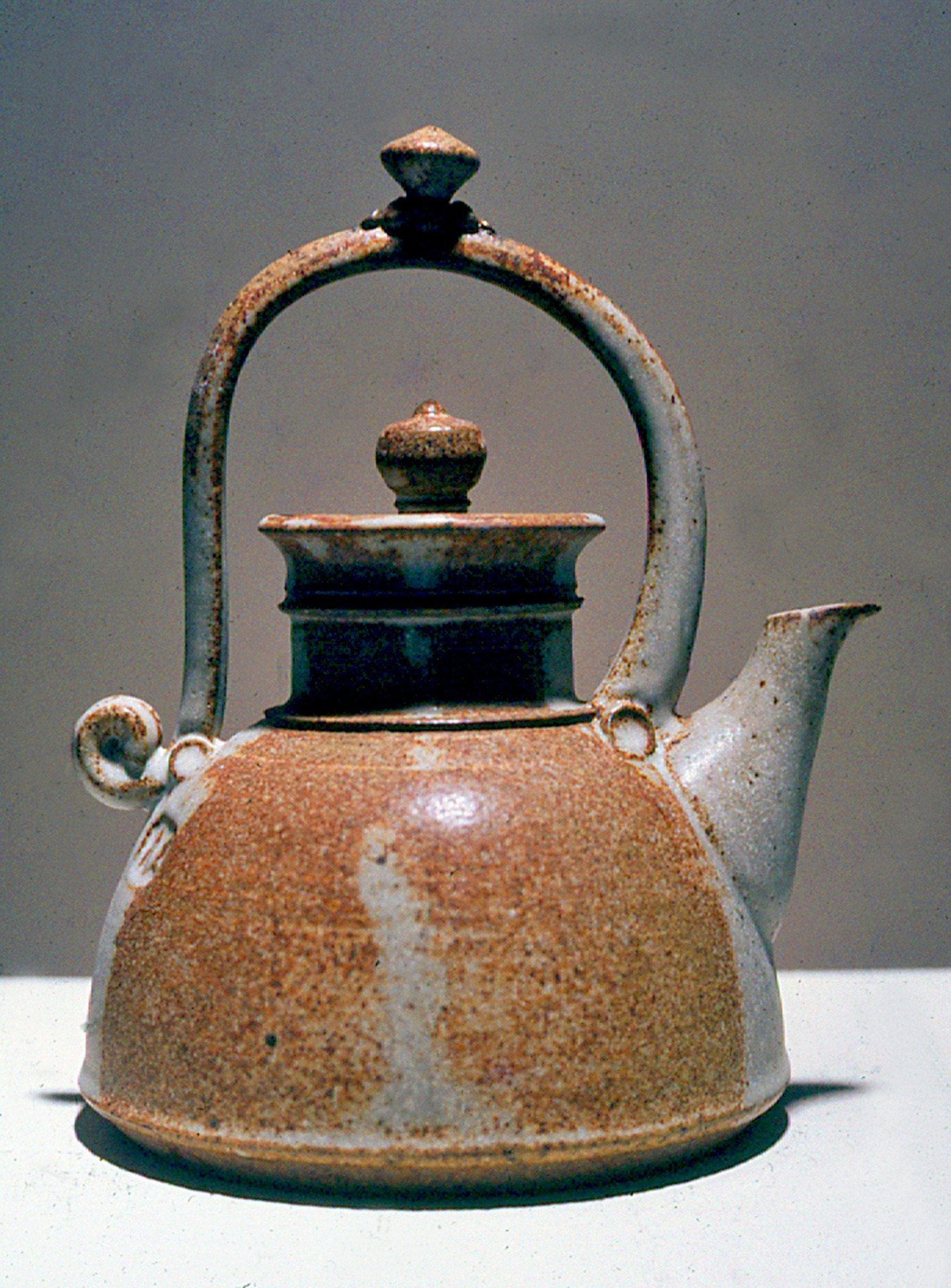
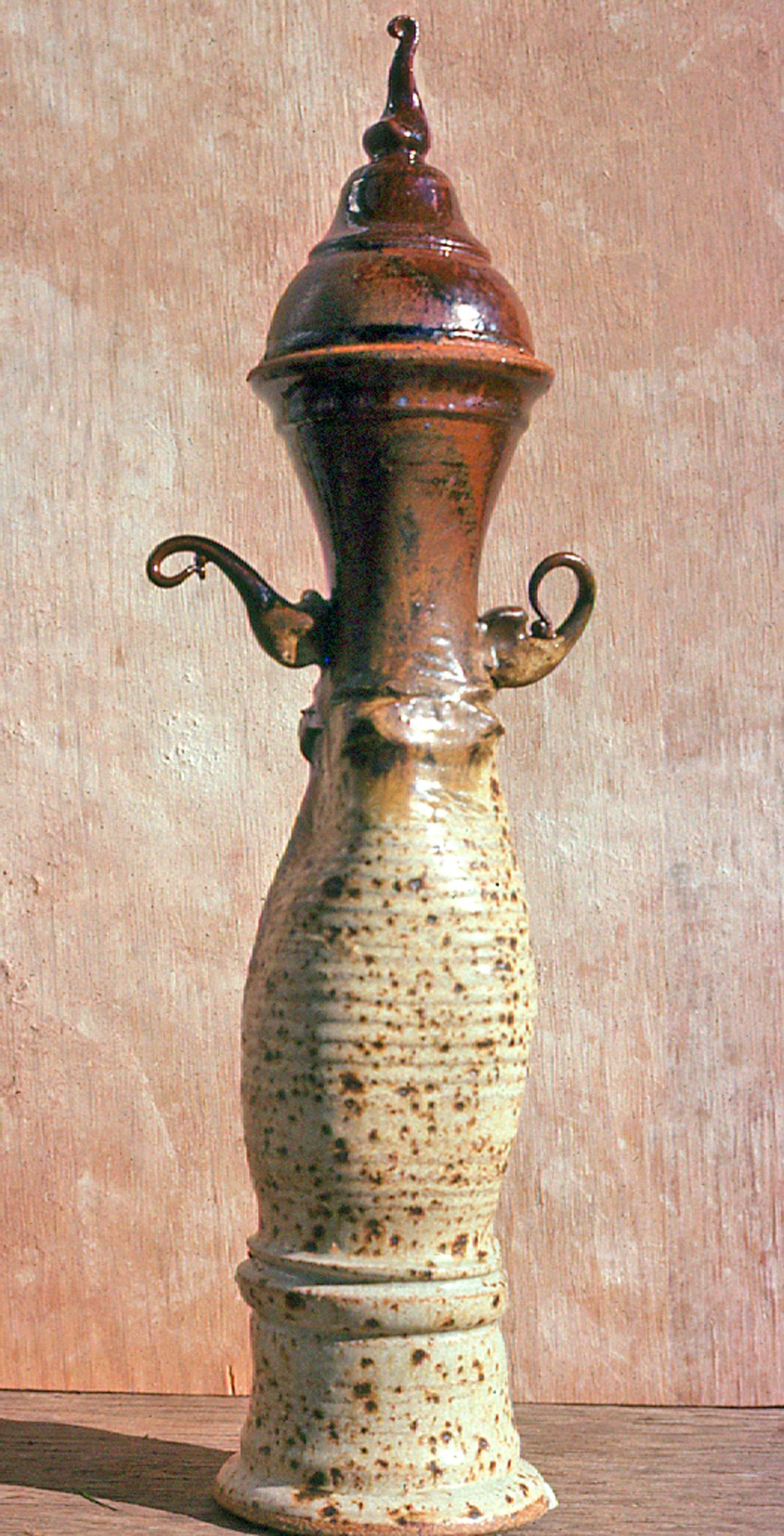
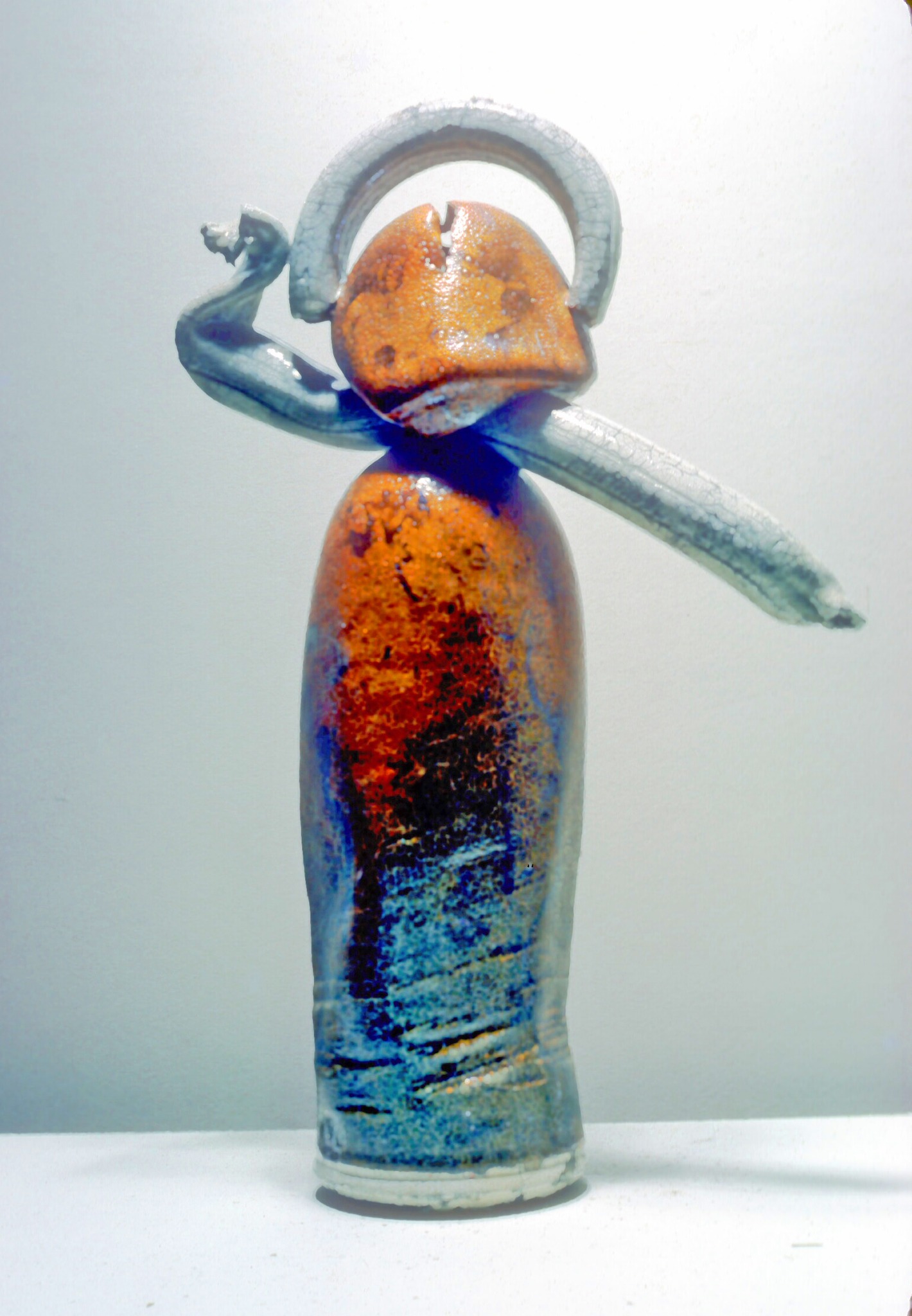
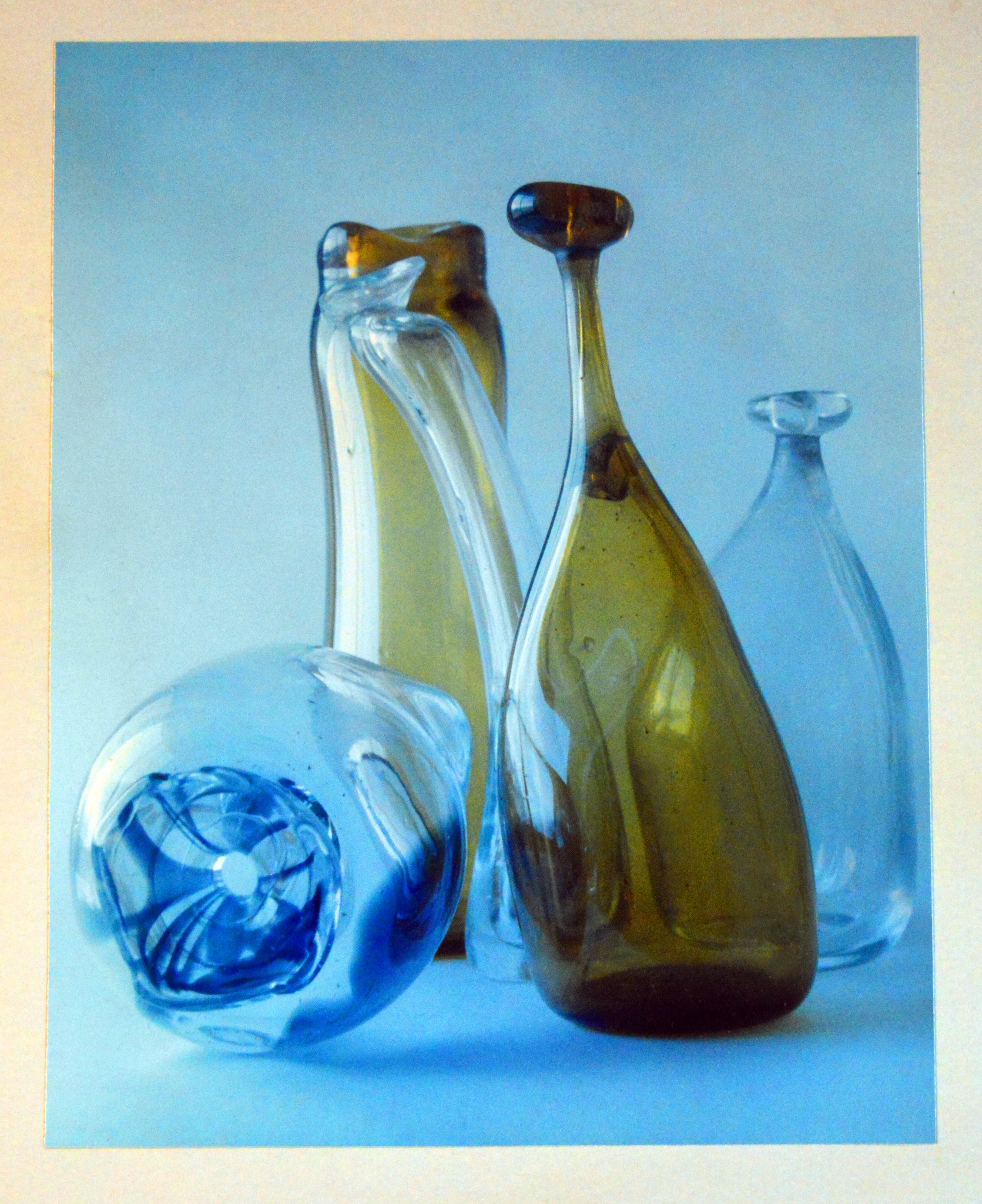


| #1:
"THE ACCICENT AT CORNELL"
Many
people don't realize John Van Alstine's four-decades long sculpture
owes much to an accident while he was a graduate student at Cornell
University in the 1970s
.
It was at this time, something unexpected happened: “I was working on
the third “wedge” piece and was almost finished, so I propped it up
and stepped back to take a final look from a distance. Suddenly it began
to tip, falling away from me; I watched helplessly as the marble crashed
to the floor-I was devastated. I walked around in a daze for what seemed
like an hour."
“When I finally pulled myself together and started to look carefully
at the scattered shards, the fresh, clean, crystalline surface of the
broken areas caught my eye. It was like a light went off. I picked up
a couple of the largest pieces and began to set them in angled positions
to reveal the fragmented surfaces. “I am not sure I realized it fully
then, but this seemingly unfortunate event was the beginning of something
important.“
Van Alstine reassembles it on the table into a radically different sculpture.
With jagged surfaces exposed, the resulting sculpture, two elements
are pinned to a polished stainless-steel plate, precariously positioned,
creating a cascade-like sensation. "Falling Stone", 1975 was the first
work to have “broken” or “raw” surfaces that would later be a central
element of his vernacular.
For
more info:
|
